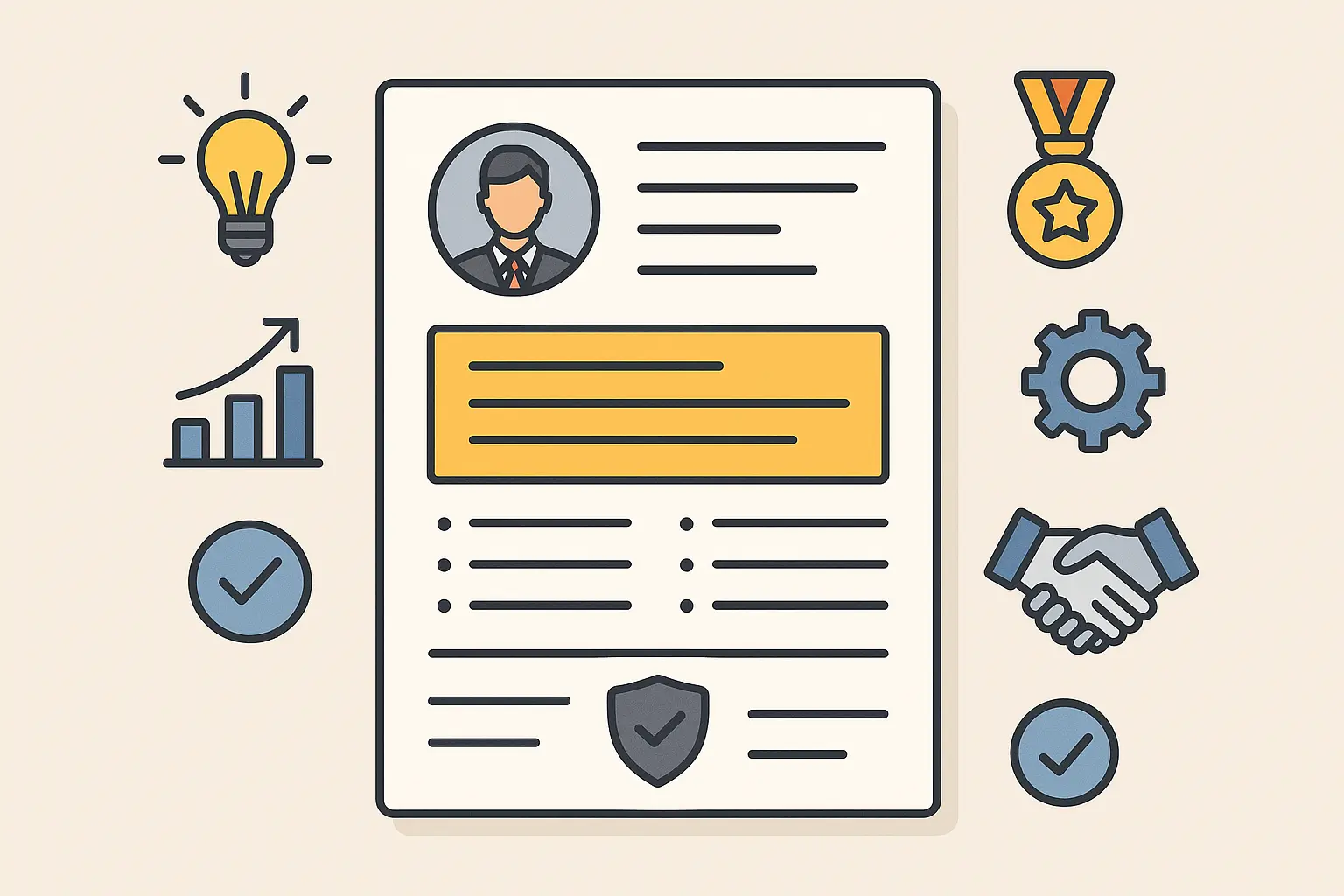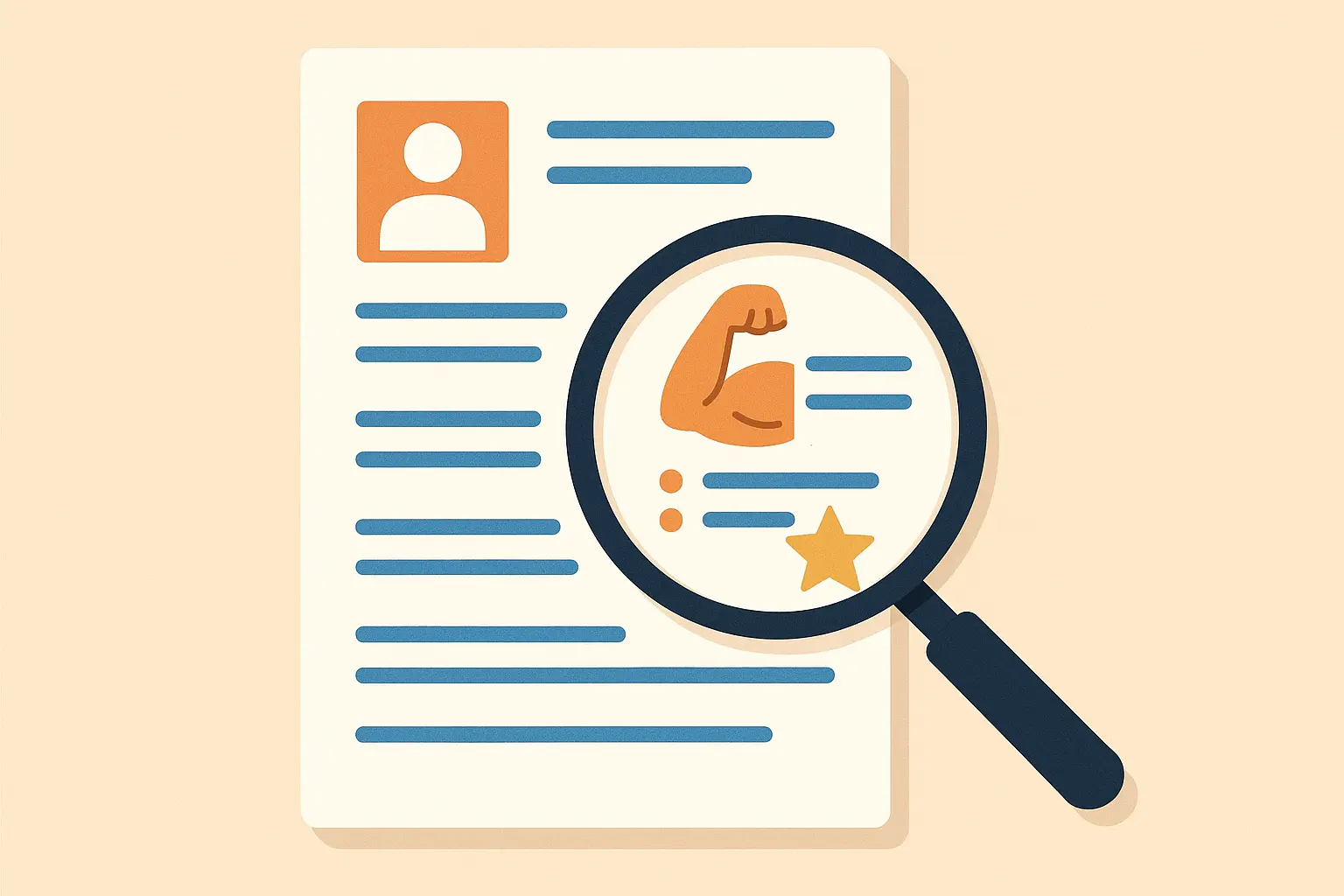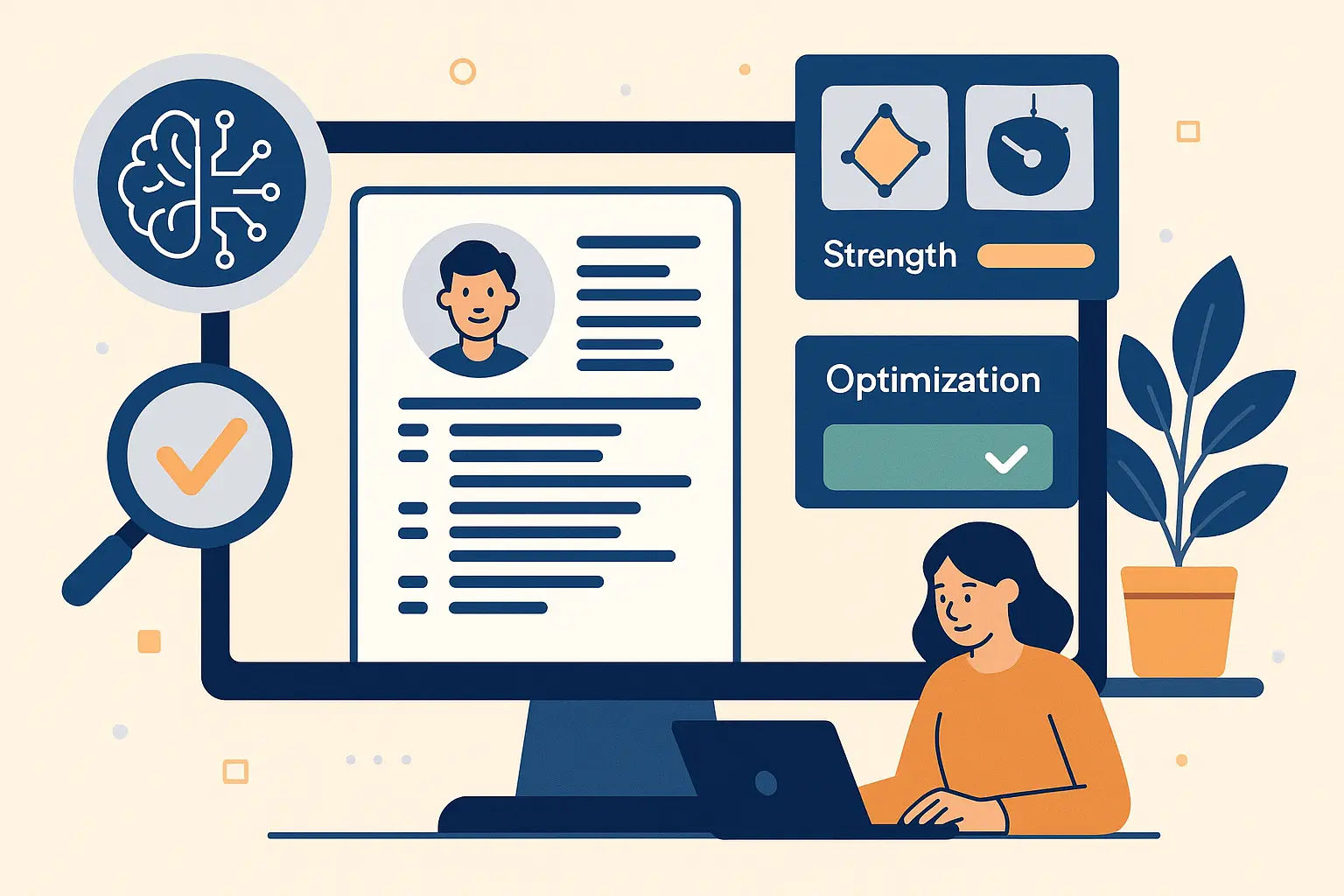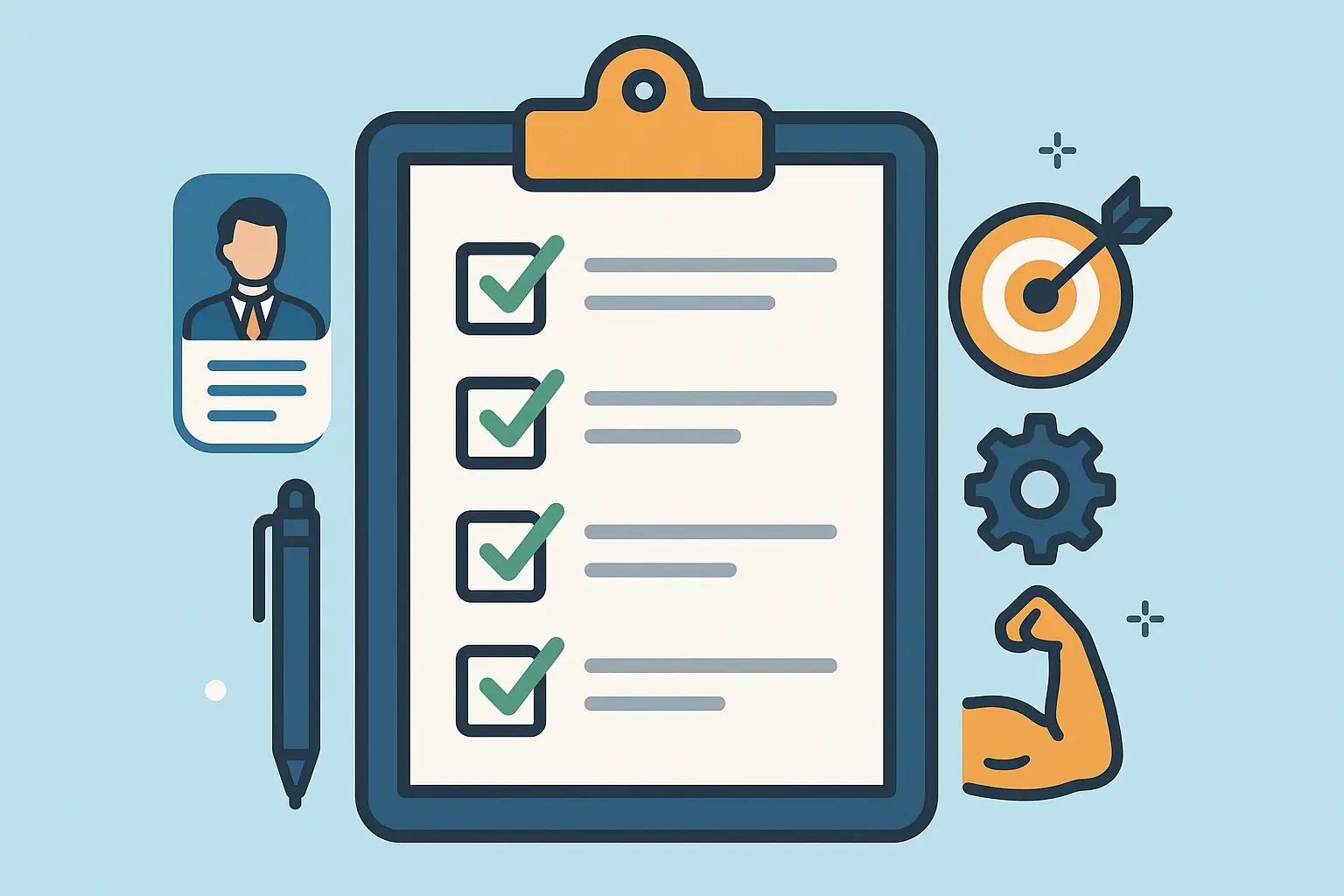Strengths for Resume: The Real Talk Guide to Actually Standing Out (Without the Corporate BS)

Most job seekers throw around generic strengths for resume presentations without understanding what actually makes hiring managers pay attention. I’ve seen countless resumes that list “team player” and “detail-oriented” as if these buzzwords hold some magical power to open doors.
Here’s what I’ve learned after years of helping people land interviews: your authentic strengths are what make you irreplaceable, but only when you present them with concrete examples and real results. We’re going to explore how to move beyond buzzword bingo to showcase the qualities that create genuine competitive advantage.
Hiring managers and recruiters only spend a few seconds on the initial review of your resume, making strategic strength placement crucial for capturing their attention and demonstrating your unique value from the very first glance.
Understanding What Strengths Actually Mean on Your Resume
Look, personal strengths aren’t just fancy words you throw on paper. They’re the real reasons you get stuff done and why people want to work with you. Think of them as your professional DNA – the core traits that make you effective at work.
Here’s the thing: skills can be taught in a weekend workshop, but strengths? Those are baked into who you are. When you figure out how to talk about your strengths in resume format, you’re basically showing employers the “why” behind all your wins.
Your Character-Based Foundation
These are the qualities that make people trust you and want you on their team. They’re huge for leadership roles or any job where you’re dealing with people’s money, secrets, or important decisions.
The Integrity Factor in Professional Settings
Integrity is simple: you do what you say you’ll do, own your mistakes, and don’t throw people under the bus.
Bosses love this because they don’t have to babysit you. You become the person they turn to when things get messy. I’ve watched people get promoted just because everyone knew they’d handle sensitive stuff the right way.
Building Reliability That Others Notice
Being reliable isn’t just showing up on time. It’s about being the person who delivers quality work consistently, communicates clearly, and follows through even when things get complicated.
This becomes your reputation. Think about who you’d trust with an important project – probably someone who’s never let you down before.
How Your Mind Processes Professional Challenges
These are the mental strengths that show how you think through problems and make decisions. They’re what separate people who just follow instructions from those who actually contribute ideas.
When developing your cognitive abilities, understanding how to balance hard and soft skills becomes crucial for creating a well-rounded professional profile that demonstrates both technical competency and strategic thinking capabilities.
Critical Thinking Beyond the Buzzword
Real critical thinking means you ask good questions, don’t just accept things at face value, and can spot problems before they blow up.
It’s not about being the smartest person in the room – it’s about being the one who asks “Wait, what if…” and saves everyone from expensive mistakes.
Creative Problem-Solving in Action
This isn’t about being artistic. It’s about finding new ways to solve old problems or seeing opportunities that others miss.
The best problem-solvers I know aren’t necessarily creative in the traditional sense – they just refuse to accept that “this is how we’ve always done it” is a good enough reason.
The Behavioral Patterns That Define Your Work Style
These are the day-to-day traits that your coworkers notice. They show how you actually get work done and handle workplace challenges.
Creating a comprehensive list of strengths requires honest self-assessment of these behavioral patterns and how they impact your professional effectiveness.
Persistence That Drives Results
Real persistence isn’t just being stubborn. It’s staying focused on what matters while being smart enough to change your approach when something isn’t working.
The persistent people who succeed don’t just work harder – they work smarter, learning from what doesn’t work and adjusting course.
Adaptability in Changing Work Environments
This means rolling with changes without losing your mind or your performance standards. With everything changing so fast at work these days, being adaptable is basically a survival skill.
The rise of AI-powered career tools demonstrates how job seekers are increasingly turning to technology for personalized career advice and resume optimization, making adaptability with new tools a crucial strength for modern professionals navigating the evolving job market.
The Skills vs. Strengths Confusion (And Why It Matters)
Most people mess this up completely. Skills and strengths aren’t the same thing, and mixing them up makes your resume boring and forgettable.
Skills are things you learned – like Excel or project management software. Strengths are how you naturally approach work and solve problems. Get this right, and you’ll stand out from everyone else listing “team player” as a strength.
Professional Competencies vs. Personal Attributes
Skills are the technical stuff – what software you know, what certifications you have, what specific knowledge you’ve picked up. Strengths are the personal qualities that make you good at using those skills.
Here’s an example: Two people both know Excel. One uses it to create basic reports. The other uses their analytical thinking strength to spot trends nobody else noticed and their communication strength to explain what it means to the team. Same skill, totally different impact.
The Technical Skills Framework
These are the concrete, teachable abilities that show up in job descriptions. Programming languages, industry regulations, specific software – stuff you can learn from a book or training course.
They get you past the initial screening, but they don’t make you memorable or irreplaceable. For a comprehensive understanding of how technical abilities complement personal qualities, explore our guide on essential hard skills for your resume to create a balanced professional profile that showcases both competencies and inherent strengths.
A data analyst might list Python programming and SQL database management as technical skills, but their analytical thinking strength determines how creatively they approach complex data problems and communicate insights to non-technical stakeholders.
How Personal Attributes Amplify Professional Capabilities
Your natural strengths determine how effectively you’ll use your technical skills in the real world. They influence whether you become a team leader, how well you handle pressure, and whether clients want to work with you again.
I’ve seen brilliant technical people plateau because they couldn’t translate their expertise into team success. The ones who advance understand that their strengths make their skills more valuable.
Creating Your Unique Professional Advantage
When you combine your natural strengths with your technical skills, you create something competitors can’t easily copy. This becomes your professional brand and determines how far you’ll go in your career.
When you master the relationship between strengths and skills, you create advancement opportunities that others miss.
Strength-Enhanced Skill Application
This is where the magic happens. You’re not just another project manager who knows scheduling software – you’re the one whose communication skills prevent delays by keeping everyone aligned from the start.
Your strengths show how you’ll do the job differently and better than other candidates.
Cross-Industry Strength Transferability
Some strength combinations work everywhere. Strong communication plus analytical thinking? That’s valuable whether you’re in healthcare, tech, or finance.
Understanding your transferable strengths helps you pivot between industries or move into leadership roles that require broader capabilities.
How to Present Your Strengths Without Sounding Like Everyone Else
Stop putting “detail-oriented” and “team player” on your resume. Everyone says that stuff. Instead, show your strengths through specific examples and real results.
The key is weaving your strengths throughout your resume, not just listing them in a section that hiring managers skip anyway. Most resumes fail because they treat strengths in resume presentations as an afterthought rather than a strategic element that should reinforce your value throughout the document.
Strategic Positioning Throughout Your Resume
Don’t create a “Strengths” section that nobody reads. Instead, show your strengths in action throughout your work experience and achievements.
This creates a story about who you are professionally rather than just a list of nice-sounding words. Understanding proper ATS-friendly resume formatting ensures your strategically placed strengths are recognized by both automated systems and hiring managers, maximizing your chances of advancing through the initial screening process.
According to Resume Builder research, hiring managers and recruiters only spend a few seconds on the initial review of your resume, making strategic strength placement in the summary, skills section, and work experience crucial for maximum impact.
Professional Summary Integration Techniques
Your opening summary should mention 2-3 key strength elements with quick examples of how they’ve helped you get results.
Instead of “Results-driven professional with strong leadership skills,” try “Operations manager who uses analytical thinking and team development strengths to improve efficiency – led team that reduced processing time by 30% while improving quality scores.”
Experience Section Strength Weaving
Show your strengths in your accomplishment bullets. Don’t just say what you did – show how your natural qualities made the difference.
Instead of simply listing accomplishments, this approach demonstrates the underlying strengths that made those achievements possible and repeatable. Here’s how the transformation looks:
|
Generic Approach |
Strength-Enhanced Approach |
|---|---|
|
“Managed team of 10 employees” |
“Leveraged strong leadership and communication skills to manage team of 10, resulting in 25% improvement in project completion rates” |
|
“Increased sales by 30%” |
“Applied analytical thinking and relationship-building strengths to identify market opportunities, increasing sales by 30% through targeted client strategies” |
|
“Completed projects on time” |
“Utilized exceptional organizational skills and attention to detail to deliver 15+ complex projects on schedule with zero quality issues” |
|
“Handled customer complaints” |
“Applied empathy and conflict resolution strengths to transform customer complaints into retention opportunities, improving satisfaction scores by 40%” |
Evidence-Based Demonstration Methods
Back up your strength claims with numbers, outcomes, and specific situations. This proves you’re not just making stuff up.
This approach transforms abstract qualities into tangible business benefits that hiring managers can easily understand and appreciate. The most compelling professional strengths presentations always include specific metrics and outcomes.
Quantified Achievement Storytelling
Use real numbers to show how your strengths created business value. “Improved team morale” is vague. “Used conflict resolution and leadership strengths to reduce team turnover by 50% and increase productivity metrics by 25%” is convincing.
Numbers don’t lie, and they make your strengths impossible to ignore.
Situational Strength Examples
Brief examples of your strengths in challenging situations help hiring managers picture you succeeding in their environment.
Pick situations that show both the strength and its business impact. These examples help hiring managers visualize how you’ll perform in similar situations within their organization.
Language and Tone Optimization
Use strong, specific language that brings your strengths to life. Avoid overused buzzwords that make you sound like everyone else.
The key is selecting dynamic vocabulary that brings your strengths to life while matching industry expectations and company culture.
Action-Oriented Strength Vocabulary
Instead of passive descriptions, use dynamic verbs that show your strengths in action. “Leveraged analytical thinking to identify cost-saving opportunities” is much stronger than “Good at analysis.”
Strong verbs create momentum and energy in your presentation.
Industry-Appropriate Terminology
Describe your strengths using language that fits your target industry. The same strength might be “attention to detail” in healthcare but “quality focus” in manufacturing.
This customization demonstrates industry knowledge while maintaining authenticity in your presentation.
The Strengths That Actually Get You Hired
Some strengths consistently impress employers across different industries. Focus on developing and showcasing these high-impact qualities.
Understanding how to identify, develop, and present these high-impact qualities can significantly improve your resume effectiveness. The key is knowing which strengths in resume presentations create the strongest impression and how to list strengths in ways that demonstrate immediate value to potential employers.
Universal High-Value Strengths
These core strengths matter everywhere and never go out of style, regardless of what industry you’re in or how technology changes.
These fundamental qualities form the foundation of professional success and remain relevant regardless of technological changes or industry evolution.
Communication Excellence That Opens Doors
This goes way beyond “good at emails.” Real communication strength means you can explain complex ideas simply, listen actively, present confidently, and adapt your style for different audiences.
A marketing manager with strong communication doesn’t just write clear reports – they translate campaign data into compelling presentations for executives, facilitate collaboration between departments, and adjust their messaging for different stakeholders, resulting in 40% faster project approvals.
Adaptability and Resilience in Uncertain Times
The ability to stay effective when everything’s changing has become essential. This means learning new systems quickly, maintaining performance during transitions, and seeing uncertainty as opportunity rather than threat.
These qualities demonstrate your capacity to handle whatever challenges arise while continuing to deliver results. The professionals who thrive during organizational changes are those who view uncertainty as opportunity rather than threat.
Problem-Solving and Critical Thinking Capabilities
This is about seeing patterns others miss, asking the right questions, and finding solutions that actually work. It’s not about having
This is about seeing patterns others miss, asking the right questions, and finding solutions that actually work. It’s not about having all the answers – it’s about knowing how to find them.
These cognitive strengths contribute directly to organizational success and competitive advantage. Research from Status.net indicates that employers consistently seek candidates with strong communication skills, problem-solving abilities, and analytical thinking, as these strengths demonstrate both technical competency and leadership potential across diverse industries.
Emerging Market-Relevant Strengths
The workplace is changing fast, and certain strengths have become more valuable than they used to be.
Understanding and developing these emerging strengths positions you for success in modern work environments. Your key strength development should include these forward-looking qualities that employers increasingly value.
Digital Fluency and Tech Adaptability
Even if you’re not in tech, you need to be comfortable learning new digital tools and understanding how technology can make work better.
This shows you’re ready for whatever technological changes come next. Even traditionally low-tech industries now require digital fluency for competitive success.
Cultural Intelligence and Inclusion
The ability to work well with diverse teams and understand different perspectives drives better business results. Companies know that diverse thinking leads to better solutions.
These strengths contribute to team cohesion, innovation, and organizational culture in measurable ways. Companies recognize that diverse perspectives drive better business outcomes, making cultural intelligence a competitive advantage.
Strength Development and Validation
Figure out what your real strengths are through honest self-assessment and feedback from others. Don’t just guess.
This process ensures your strength presentation is both accurate and compelling to potential employers. According to Gallup’s CliftonStrengths research, there are 28-29 million people who understand CliftonStrengths terminology, making it increasingly valuable to include your Top 5 strengths on your resume as a conversation starter and differentiation tool.
Self-Assessment and Feedback Gathering
Use professional assessments, ask for feedback from colleagues, and pay attention to what people consistently say about your work style.
This data-driven approach to strength identification creates more credible and targeted resume presentations. I recommend gathering feedback from multiple sources to validate your self-perception against how others experience your professional impact.
Professional Validation Methods
Collect testimonials, recommendations, and performance reviews that confirm your strengths. Third-party validation makes your claims more credible.
External verification adds credibility to your claims and demonstrates real-world application of your qualities. The strongest candidates I work with can point to specific feedback that confirms their strength claims.
Industry-Specific Strength Positioning
Different industries value different combinations of strengths. Tailor your presentation to match what your target field actually cares about.
This strategic approach ensures your strengths resonate with hiring managers who understand the specific challenges and opportunities within their industry context. Your strengths examples for resume should reflect the language and priorities of your target field.
Healthcare and Service Industries Focus
These fields prioritize empathy, patience, attention to detail, and cultural sensitivity because they directly impact patient outcomes and customer satisfaction.
These people-focused strengths directly impact patient outcomes, customer satisfaction, and team effectiveness in high-stress environments where human connection drives success. Healthcare professionals who excel combine technical competency with genuine care for others.
Technology and Innovation Sector Priorities
Tech environments value analytical thinking, adaptability, continuous learning, and collaborative problem-solving because innovation requires people who can work together to solve complex problems.
These strengths demonstrate your capacity to thrive in fast-paced, constantly evolving environments where innovation and technical excellence determine competitive advantage. The most successful tech professionals balance technical skills with strong collaboration abilities.
Leadership and Management Role Requirements
Management positions need emotional intelligence, strategic thinking, decision-making under pressure, and team development capabilities because your success depends entirely on your team’s success.
These strengths show your ability to guide others, navigate complex organizational dynamics, and drive results through people rather than individual contribution. Effective leaders understand that their success depends entirely on their team’s success.
Creative and Marketing Field Expectations
Creative industries emphasize storytelling, cultural awareness, trend identification, and innovative thinking that drives measurable engagement and business results.
These strengths demonstrate your capacity to connect with audiences and create compelling content that achieves business objectives. Creative professionals who understand both artistic vision and business impact advance fastest in their careers.
Strength-Building Action Plans
Develop your key strengths intentionally through targeted experiences and deliberate practice.
This systematic approach ensures continuous improvement and provides fresh examples to incorporate into your resume presentations. Your key strength development should be intentional and measurable.
Targeted Experience Acquisition
Seek out projects and opportunities that let you exercise your strengths while building fresh examples for your resume.
This proactive approach ensures your strength claims remain current and compelling. According to ResumeWay research, it’s recommended to include 3 to 5 strengths that are directly relevant to the position you’re applying for, as this number allows you to provide enough detail without overwhelming the reader while maintaining focus on your most impactful qualities.
Professional Development Integration
Include strength development in your ongoing education through workshops, certifications, and mentoring relationships.
This approach provides third-party validation of your capabilities and dedication to excellence. The professionals who advance consistently are those who invest in developing their natural strengths rather than trying to fix their weaknesses.
|
Strength Category |
Development Activities |
Resume Integration Examples |
|---|---|---|
|
Communication |
Toastmasters, presentation workshops, cross-cultural training |
“Enhanced team collaboration through advanced communication training, resulting in 30% faster project delivery” |
|
Leadership |
Management courses, mentoring programs, team lead roles |
“Developed leadership capabilities through formal training and mentoring 5 junior staff members to promotion” |
|
Technical |
Certifications, online courses, hands-on projects |
“Strengthened analytical skills through advanced Excel certification, improving reporting efficiency by 50%” |
|
Creative |
Design workshops, innovation challenges, side projects |
“Expanded creative problem-solving abilities through design thinking workshops, leading to 3 process improvements” |
When considering best key strengths for a resume, remember that authenticity trumps perfection every time. A project manager returning to work after a career gap might include volunteer experience coordinating community events, highlighting how this strengthened their organizational and leadership skills: “Applied project management and team coordination strengths to organize annual charity fundraiser for 500+ attendees, managing $50K budget and 20 volunteers, demonstrating continued professional growth during career transition.”
Making Resume Builder IQ Work for Your Strength Strategy
Resume Builder IQ takes the guesswork out of presenting your strengths effectively. The AI analyzes your experience to suggest relevant strengths for your target roles while making sure everything is optimized for both ATS systems and human reviewers.
The system’s advanced algorithms analyze your experience to suggest relevant strengths for target roles while ensuring ATS optimization through strategic keyword integration. This transforms the complex task of strength presentation into a streamlined process that actually works.
When crafting your professional summary, consider our comprehensive guide on resume summary examples to understand how top-performing candidates integrate their strengths seamlessly into compelling opening statements that capture hiring managers’ attention immediately.
Instead of wondering whether your strength descriptions will resonate with employers, you get recommendations based on what actually works for successful candidates in your field.
The platform helps you move beyond generic lists by creating specific, quantified examples of how your strengths have driven real results. With industry-specific templates and expert content suggestions, your strengths get presented in language that hiring managers in your field actually want to see.
What makes this different is the complete integration throughout your resume. Your key strength elements appear strategically in your professional summary, experience bullets, and achievement statements, creating a cohesive story that positions you as the ideal candidate.
For professionals seeking to understand the broader context of resume optimization, our detailed analysis of what to put on your resume provides strategic insights into balancing strengths with other essential elements for maximum impact.
Most importantly, the platform eliminates guesswork from strength presentation. Instead of wondering whether your list strength approach will resonate with employers, you get data-driven recommendations based on successful candidates in your field.
Ready to transform how you present your professional strengths? Try Resume Builder IQ’s AI-powered resume optimization and see how strategic strength presentation can significantly increase your interview success rate.
Strength Optimization Checklist:
-
☐ Identified 3-5 core strengths relevant to target role
-
☐ Gathered quantified examples for each strength
-
☐ Integrated strengths throughout resume sections
-
☐ Customized language for industry expectations
-
☐ Validated strengths with performance data
-
☐ Prepared strength-based interview responses
-
☐ Aligned strengths with job description keywords
Final Thoughts
Your strengths aren’t just nice personality traits to mention in passing – they’re the real reasons behind your professional wins and what makes you valuable to employers.
The difference between getting interviews and getting ignored often comes down to how well you demonstrate these qualities through concrete examples and real outcomes. I’ve seen talented people struggle because they couldn’t explain their value, while others with similar backgrounds landed multiple offers by presenting their strengths strategically.
Remember: authenticity beats perfection every time. Hiring managers can spot generic strength lists immediately, but they’re drawn to candidates who can explain how their unique combination of qualities has driven actual results.
Focus on the strengths that genuinely represent who you are professionally, then build compelling evidence around those qualities. The most successful job searches happen when people stop trying to be everything to everyone and start showcasing what makes them uniquely valuable.
The job market will keep changing, but the human qualities that drive professional success stay constant. By understanding how to identify, develop, and present your authentic strengths effectively, you’re building the foundation for long-term career success that goes way beyond your current job search.









